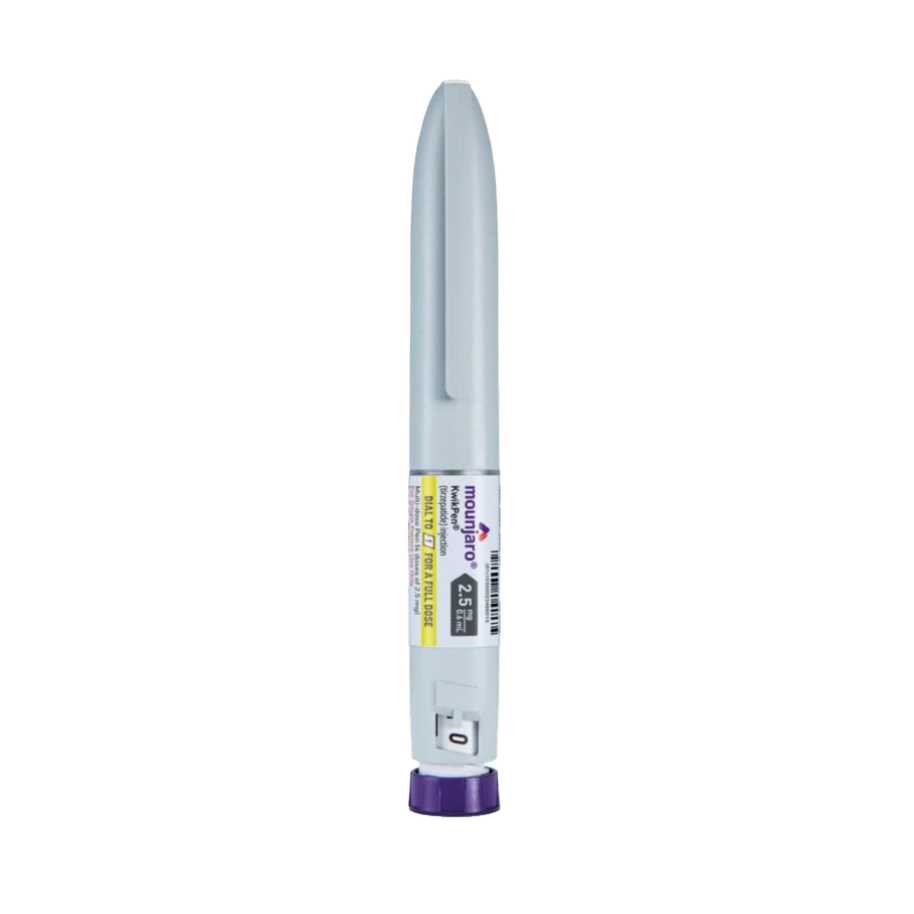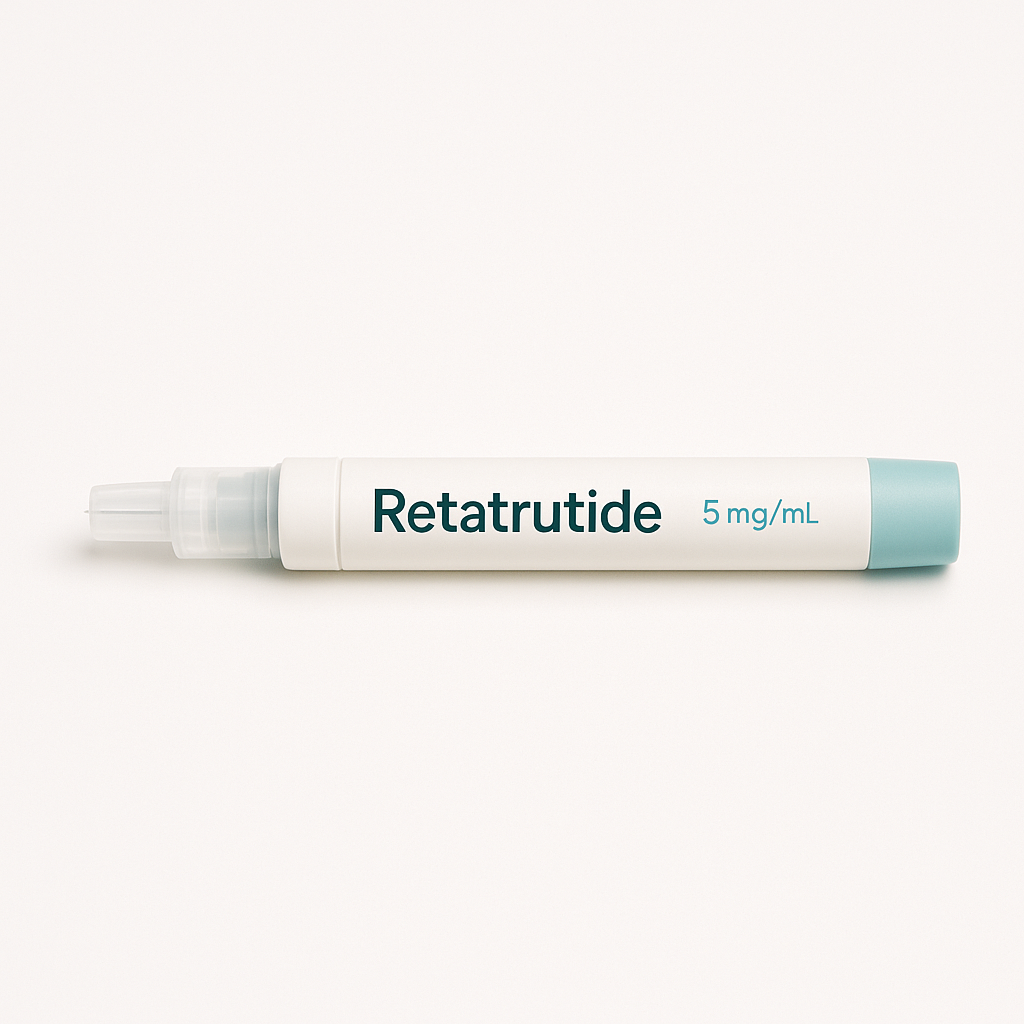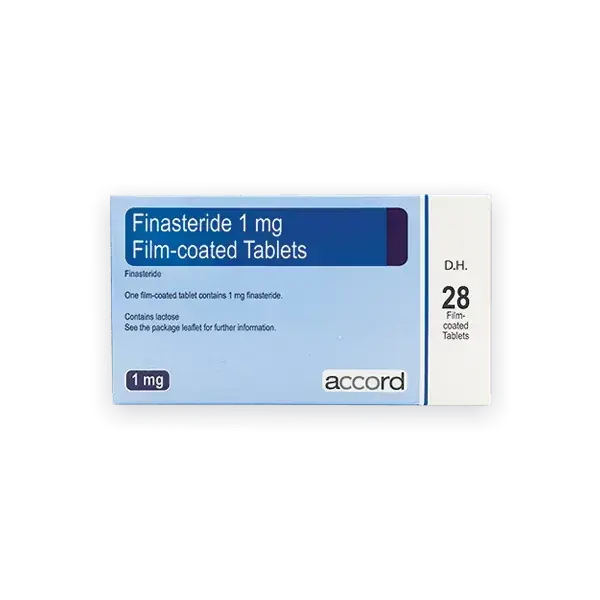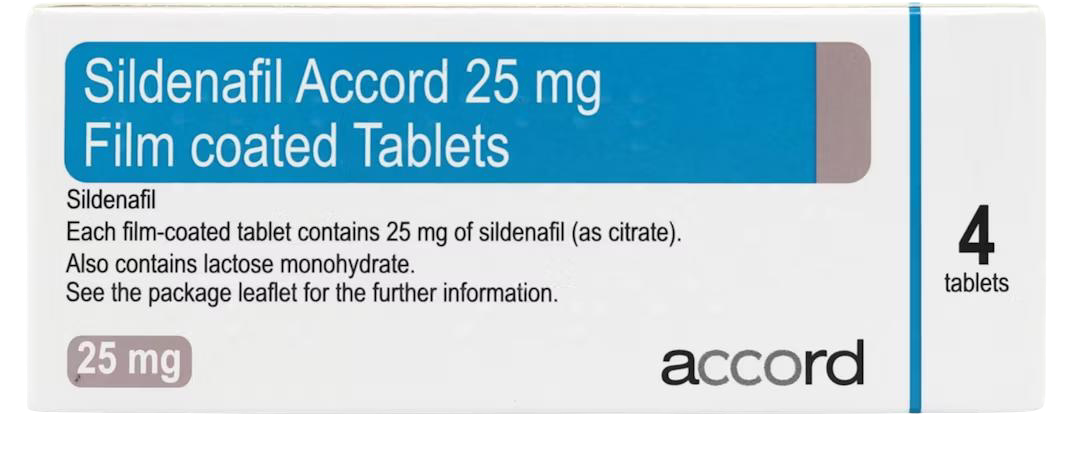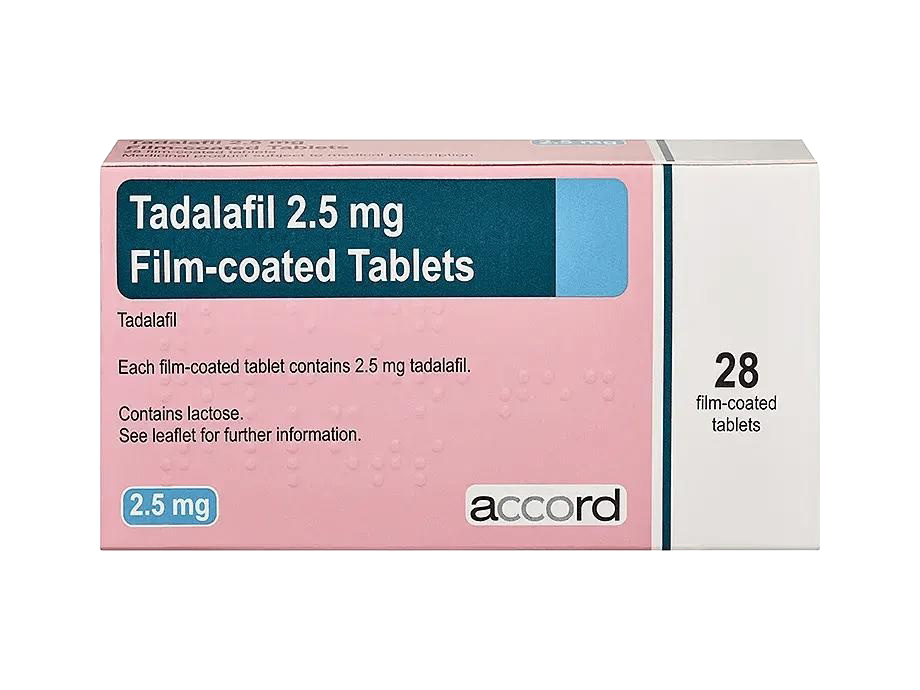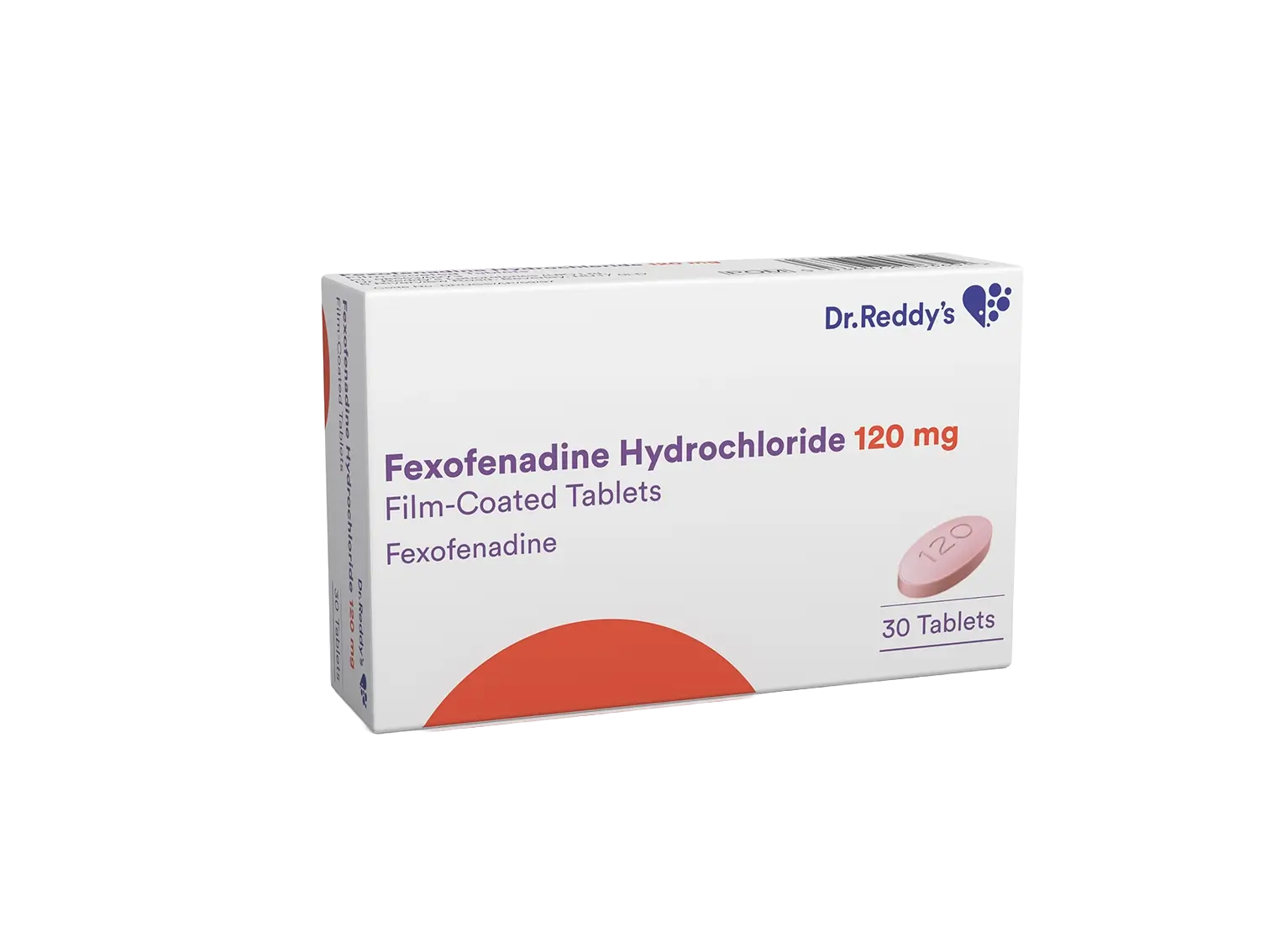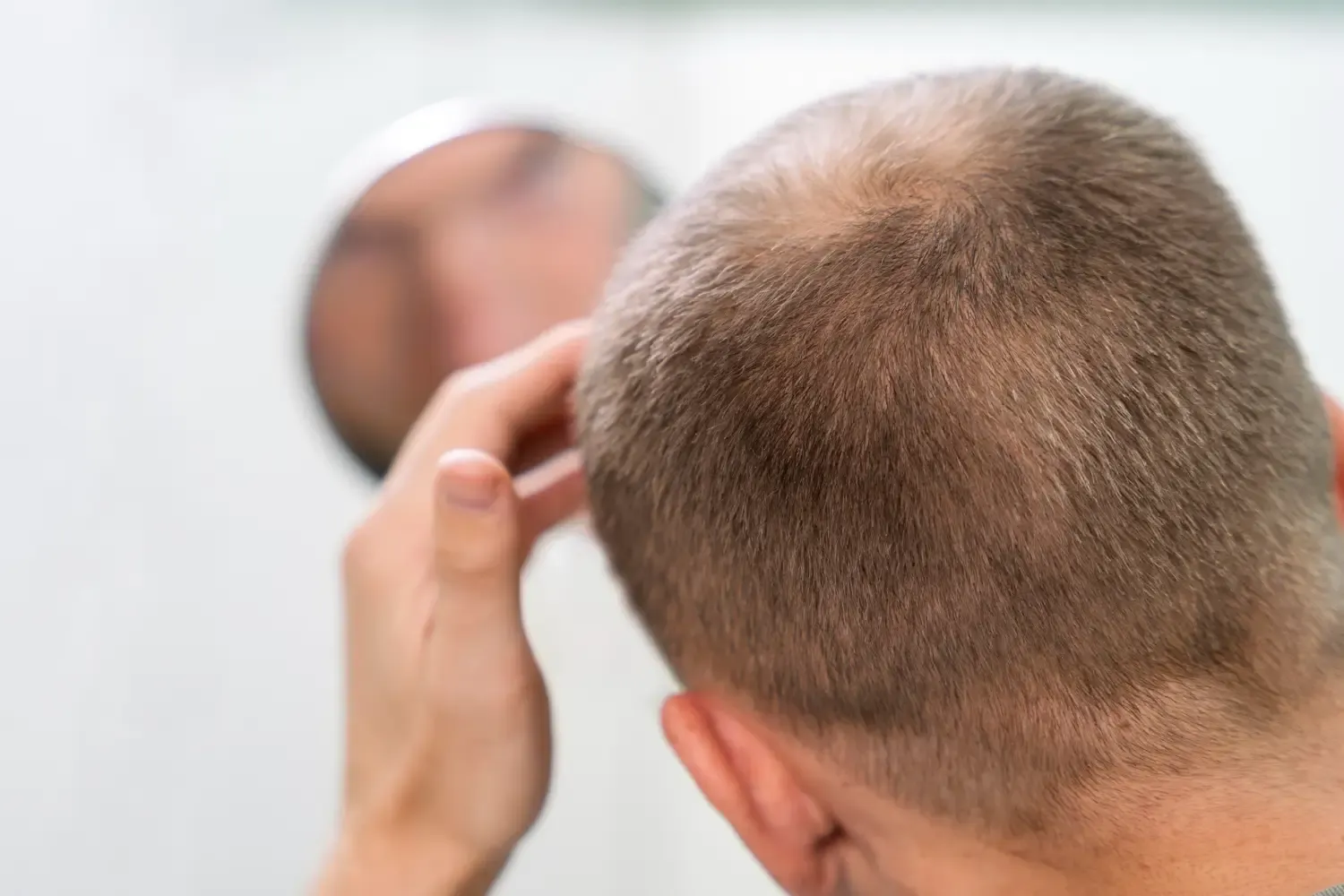£5 OFF your first weight loss consultation with code LIVE5. Christmas Delivery Cut-Off: Order by 19th December for delivery before Christmas (subject to approval).
Hair Loss in Men: Causes, Treatments, and What Really Works
By Irfan Mahmud, Pharmacist & Independent Prescriber
For such a widespread condition (which affects around half of men aged 50), we know surprisingly little about hair loss in men. For many people, hair loss may come down to whether or not you have the ‘bald gene’ in your family - but it’s a little more complicated than that.
In fact, understanding the reasons behind hair loss could also help you understand why it can be treated. In this blog, we’re going to delve into what causes hair loss in men. We’ll look at why some men are affected and others aren’t, and how by treating it early you can reverse it.
Causes of Hair Thinning in Men
Temporary Hair Loss
Before we delve into the causes of hair thinning and hair loss in men, it’s worth mentioning that it can sometimes be a temporary condition triggered by environmental factors. These can include:
- Major surgery
- A prolonged period of stress
- Taking certain medication
- Following a diet lacking in certain nutrients
- Wearing your hair in tight-knit styles
In these cases, hair loss can usually be corrected if you reverse the environmental factors that are causing it.
The other, much more common form of hair loss is clinically known as androgenetic alopecia (or male pattern baldness). That’s the one we’re most interested in - because that’s the one that affects around 30% of men aged 30 in the UK (and 50% of men aged 50).
Androgenetic Alopecia (Male Pattern Hair Loss)
When people talk about inheriting ‘the bald gene’ in a family, they’re not entirely wrong. In the vast majority of cases, hair loss is inherited. But it’s not quite as simple as it’s sometimes made out.
Hair loss in men occurs when a hormone known as dihydrotestosterone (DHT) attaches itself to the receptors of your hair follicles. Initially this prevents your hair from growing as thickly as it once did, which leads to hair thinning. But over time, this process can prevent new hairs from growing entirely.
Whether or not you experience hair loss is determined by your receptivity to DHT. Essentially, if your body is more receptive to DHT, you’re at a higher risk of hair loss. You inherit this receptivity from family members - which is why male pattern hair loss is a hereditary condition.
So there is a ‘bald gene,’ in the sense that hair loss is hereditary. However, this also suggests that it’s something you can’t prevent. But that’s not the case at all.
Signs of Androgenetic Alopecia
The most common sign of androgenetic alopecia tends to be on the front and sides of your scalp. You may notice your hairline gradually receding into a wedge or v-shaped pattern.
For some people, the first signs of androgenetic alopecia appear on the top - or crown - of your head. You may notice visible hair loss in this area, which then gradually spreads to other parts of your scalp.
Other types of hair loss look a little different. You may lose chunks of hair in random areas, or experience thinning throughout your scalp. In these cases, it may be better to speak with a medical professional to create a treatment plan.
How to Treat Hair Loss Early
Because androgenetic alopecia is genetic, it’s tempting to accept it as a normal, natural part of life - and one that you can’t prevent. But there are a number of treatments that have been clinically proven to reverse the early signs of hair loss in men.
The treatments we’re going to list here are recommended by NICE, an independent organisation that produces clinical guidance for health professionals in the UK. When you see your GP, they often refer to NICE guidelines to suggest the correct course of treatment for you.
Finasteride (Oral)
Finasteride is considered to be the standard treatment for male hair loss. Finasteride is an oral treatment, which means it comes in pill form. How it works is fairly simple: it blocks an enzyme in your body from converting testosterone to DHT. As a reminder, DHT is the hormone which is preventing your follicles from producing more hair.
Minoxidil (Topical)
The next most common hair loss treatment is minoxidil. Minoxidil is slightly different in the sense that it’s a topical treatment that comes in the form of a gel. It’s a little less convenient to use than finasteride, as you’ll have to apply minoxidil to your scalp every day. Whilst finasteride blocks the production of DHT, minoxidil works by extending your hair’s growth stage.
Surgical Options
* It’s worth mentioning that finasteride or minoxidil are only likely to be effective for men who are in the early stages of hair loss. If you’ve already experienced significant hair loss, these treatments aren’t for you. Your other option is probably a surgical hair transplant. However, this can be prohibitively expensive for some people. If you’re thinking of going down this road, you may also want to think about the pros and cons of having surgery.
Frequently Asked Questions
What happens if I forget to take my medication?
Don’t worry. If you forget to take finasteride one day, wait until the following day to take it again. Never exceed your stated dose of one tablet a day.
What will happen if I stop taking hair loss medication?
If you do stop taking your medication, there’s a good chance that you will start to lose hair again. This is why it’s important to be as consistent as possible with the medication. It’s also worth bearing in mind that if you do start this treatment, it must be a long-term commitment.
Is there anything I can do to support the effects of the medication?
Although finasteride has been clinically proven to boost hair growth as a standalone medication, there are other steps you can take that may support hair growth. These include following a balanced diet, avoiding prolonged periods of stress and quitting smoking.
Hair Loss Results: Can Finasteride Restore Your Hairline?
The evidence suggests that yes, finasteride can restore the hairline of men.
In this flagship study, 87.1% of men reported extra hair growth.
One study found that 90% of finasteride users ‘maintained or sustained visible improvement in scalp coverage’ after five years.
This study found that 85.7% of participants reported an improvement in hair growth after five years of taking finasteride. Almost all (98.4%) reported that they experienced no further hair loss since taking it.
According to this study, 83% of finasteride users reported experiencing more hair growth or no more hair loss two years after first taking finasteride.
These studies all suggest that finasteride is an effective treatment for hair loss. However, they also suggest that finasteride is definitely a long-term treatment for hair loss. Whilst you could start to see improvements after 3-6 months, it’s likely to take at least one year to see considerable improvements.
It should be noted that minoxidil has also been proven to boost hair growth in men, with this study finding that 70% of men reported greater hair coverage after taking minoxidil for 16 weeks. However, finasteride is generally seen as the more convenient and effective medication for hair loss.
Summary
Hair loss is determined by your receptivity to the DHT hormone, which binds itself to hair follicle receptors and prevents hair growth. You inherit DHT receptivity from family members. Hair loss can be treated by taking daily finasteride pills. Clinical trials have found that finasteride boosted hair growth in 90% of men. But it’s only intended for men who are experiencing the early signs of hair loss. It’s unlikely to be effective if you’ve already had significant hair loss.
Reviewed by Irfan Mahmud, Pharmacist & Independent Prescriber (GPhC Reg. No: 2080386)
Irfan is a UK-registered pharmacist and independent prescriber with expertise in weight management, primary care, and lifestyle medicine. As the founder of Cuva Health, he is dedicated to providing safe, clinically-approved treatments and clear, trustworthy health guidance.

